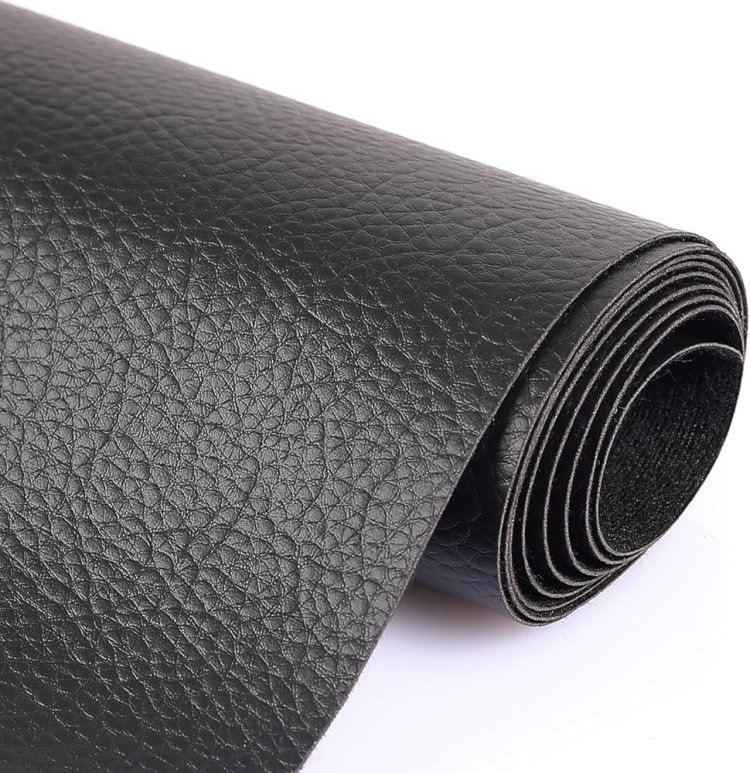How Faux Leather is Transforming the Furniture Industry
Explore high-quality faux leather from KikiTextiles, perfect for fashion, furniture, and upholstery applications.

In recent years, faux leather has rapidly gained popularity in the furniture industry, becoming a favored material for both designers and consumers. As people become more eco-conscious and seek affordable alternatives to traditional leather, faux leather offers a sustainable, versatile, and stylish option for home décor. Whether it's in sofas, chairs, or ottomans, this material is changing the way we approach furniture design, offering a host of benefits that go beyond just aesthetics.
The Rise of Faux Leather in Furniture
The furniture industry has undergone a significant transformation, with synthetic leather emerging as a key player in this shift. While real leather has long been associated with luxury and durability, it has a high environmental and ethical cost. Traditional leather production involves the use of animal hides and chemical processes that can harm the environment. This has led many consumers and manufacturers to seek alternatives that align better with their values of sustainability and animal welfare.
Faux leather, made from synthetic materials such as polyurethane (PU) or polyvinyl chloride (PVC), provides an ideal solution. It mimics the look and feel of real leather but without the use of animal products. As consumers demand more eco-friendly, cruelty-free options, this material is meeting this need in the furniture market. It is now a top choice for manufacturers aiming to create stylish yet sustainable furniture pieces that appeal to a wide range of customers.
Environmental Impact and Sustainability
One of the most significant factors driving the adoption of faux leather in furniture is its environmental benefits. Real leather production requires large amounts of water and chemicals for tanning, which can lead to soil and water pollution. The process also results in substantial greenhouse gas emissions, contributing to climate change.
On the other hand, synthetic leather is generally more eco-friendly. Modern manufacturing techniques have improved the environmental footprint of synthetic materials, making them less harmful. Many faux leather products are now made from plant-based materials or low-impact processes that minimize pollution. Additionally, this material is often more durable, meaning furniture made from it lasts longer and reduces the need for frequent replacements. This results in less waste and fewer resources used over time.
For those looking to reduce their environmental impact, faux leather offers a sustainable alternative that helps minimize the ecological footprint of home décor. It provides a practical solution for those who want high-quality furniture without contributing to the negative environmental effects of traditional leather production.
Durability and Cost-Effectiveness
Faux leather furniture is not only environmentally friendly but also highly durable and cost-effective. Real leather, while long-lasting, can be expensive and may require special care to maintain its appearance over time. Faux leather, on the other hand, is much more affordable, making it accessible to a broader range of consumers. It offers a similar look and feel to real leather but at a fraction of the price, making it an attractive option for budget-conscious homeowners.
In terms of durability, faux leather furniture is resistant to scratches, fading, and wear, making it an ideal choice for high-traffic areas. Unlike real leather, which can dry out and crack if not properly maintained, this material is easier to care for and requires minimal upkeep. It is also resistant to stains and spills, making it perfect for households with children or pets. This low-maintenance aspect has made synthetic leather furniture a preferred choice for busy families who want stylish yet practical home décor.
Style and Versatility
Another reason why faux leather is transforming the furniture industry is its versatility in design. Faux leather can be manufactured in a wide variety of textures, colors, and finishes, allowing for greater design flexibility. Whether you're looking for a sleek, modern sofa in a bold color or a classic armchair in neutral tones, this material can easily fit into any home décor style.
Moreover, faux leather can be made to look and feel like different types of real leather, from soft, smooth textures to more rugged, distressed finishes. This versatility means that designers and homeowners have a wealth of options when selecting faux leather furniture that suits their individual tastes and preferences.
Additionally, faux leather is more lightweight than traditional leather, making it easier to handle and move around when necessary. This feature is especially appealing to those who may frequently redecorate or relocate, as faux leather furniture offers greater flexibility without compromising on style.
Ethical Considerations and Consumer Demand
As ethical concerns around animal welfare continue to grow, many consumers are actively seeking furniture options that do not involve the use of animal products. Faux leather provides a cruelty-free alternative that aligns with the values of those who prefer not to support industries that involve animal exploitation.
The growing demand for ethical furniture has led many designers and manufacturers to prioritize this material in their product lines. This shift is not only driven by consumer preferences but also by the broader trend of sustainability and conscious consumerism. Companies that offer faux leather furniture are positioning themselves as leaders in the ethical design space, attracting environmentally and socially conscious buyers.
Faux Leather Furniture for All Budgets
Faux leather has become a versatile option across a wide range of price points, making it accessible to consumers with different budgets. High-end faux leather furniture pieces offer the same luxurious look and feel as their real leather counterparts but at a much lower price. This allows homeowners to invest in high-quality, stylish furniture without breaking the bank.
At the same time, budget-friendly faux leather options provide affordability without sacrificing style. Whether you're furnishing a studio apartment or outfitting a spacious living room, synthetic leather offers an accessible solution that fits your financial needs.
Conclusion
Faux leather is undeniably transforming the furniture industry by offering an eco-friendly, cost-effective, and stylish alternative to traditional leather. With its environmental benefits, durability, and versatility in design, this material is reshaping how consumers approach home décor and furniture purchases. As demand for ethical and sustainable products continues to rise, faux leather will remain at the forefront of the furniture market, providing a perfect balance of form, function, and value for both homeowners and businesses alike.
As manufacturers continue to innovate and improve faux leather's quality and appearance, its presence in the furniture industry will only grow, making it an essential material for the modern, eco-conscious consumer.
What's Your Reaction?

















